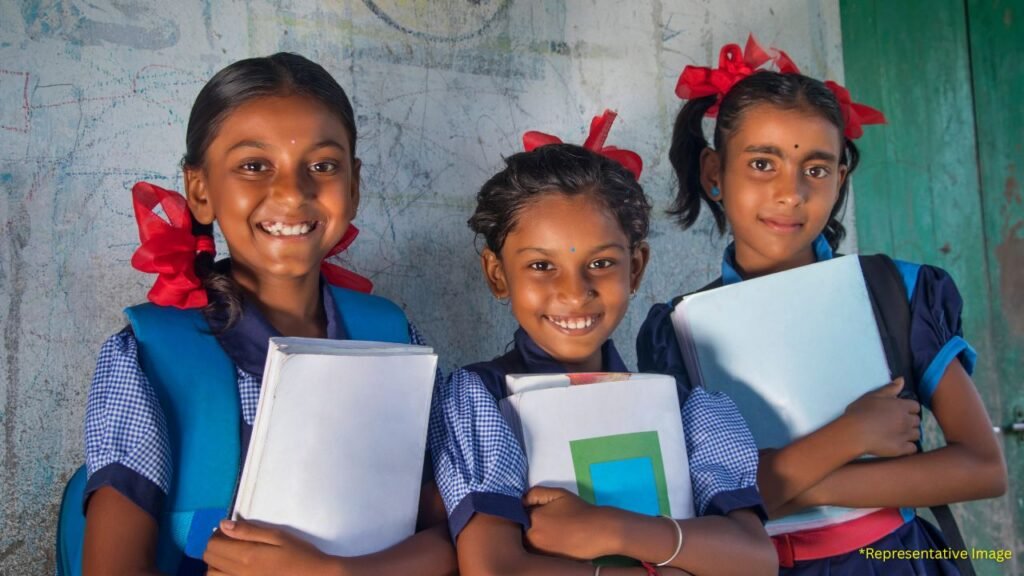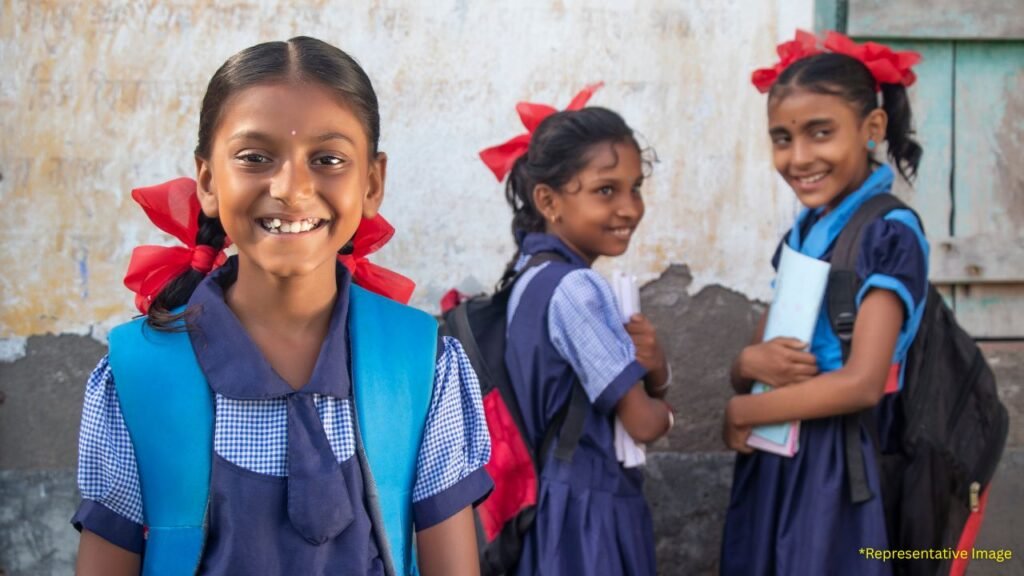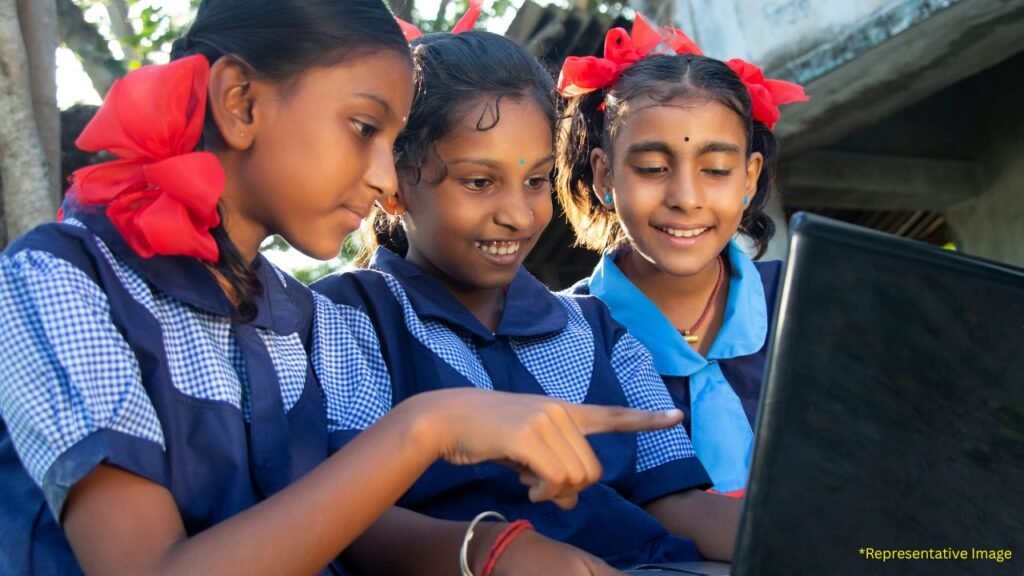Lado Protsahan Yojana: In a groundbreaking move that signals a paradigm shift in how Indian society perceives and values the girl child, the Rajasthan Government has unveiled the Lado Protsahan Yojana 2024-25. This transformative initiative goes far beyond mere financial assistance—it represents a bold statement that girls are not burdens to be endured, but treasures to be celebrated and nurtured.
The Genesis of Change: Understanding the ‘Lado’ Philosophy
The word ‘Lado’ itself carries deep cultural significance in Rajasthani tradition, referring to a beloved daughter who brings joy and prosperity to the family. By choosing this name, the government has cleverly tapped into the emotional and cultural fabric of Rajasthani society, transforming a scheme into a movement that resonates with families at the grassroots level.
This isn’t just another government program—it’s a cultural revolution wrapped in policy. The scheme acknowledges the harsh reality that many families still view daughters as economic liabilities, particularly in rural areas where dowry systems persist and educational opportunities for girls remain limited. By reframing the narrative around the girl child, the Lado Protsahan Yojana challenges centuries-old mindsets while providing tangible economic incentives for change.

Beyond Numbers: The Human Story Behind the Statistics
While the scheme’s financial benefits are impressive—a total of ₹1,50,000 distributed across seven crucial life stages—the real impact lies in the stories it will create. Consider Meera, a hypothetical beneficiary born in a remote village in Jaisalmer. Under this scheme, her birth is celebrated with ₹2,500, marking the beginning of a journey where society invests in her potential rather than lamenting her gender.
As Meera grows, each milestone becomes a moment of recognition and support. Her first birthday brings another ₹2,500, contingent on complete immunization—a clever policy design that ensures health outcomes while providing financial rewards. When she enters Class 1, the ₹4,000 benefit doesn’t just support her education; it sends a powerful message to her family and community that her learning matters.
The progression continues strategically: ₹5,000 in Class 6 (when many girls traditionally drop out), ₹11,000 in Class 10 (the critical secondary education phase), ₹25,000 in Class 12 (when career choices become paramount), and finally ₹50,000 upon graduation at age 21—a substantial sum that can fund higher education, skill development, or even entrepreneurial ventures.

A Masterclass in Policy Design: The Seven-Stage Strategy
The genius of the Lado Protsahan Yojana lies not just in its generosity, but in its strategic timing. Each payment is aligned with critical decision points in a girl’s educational journey, moments when families traditionally weigh the costs and benefits of continued education.
Stage 1 and 2 (Birth and First Birthday): These early payments establish the girl child’s value from the very beginning, encouraging institutional delivery and proper healthcare. The immunization requirement cleverly ensures that financial incentives align with public health goals.
Stage 3 (Class 1 Admission): The ₹4,000 payment at primary school enrollment addresses the opportunity cost of education, compensating families for choosing school over child labor or domestic responsibilities.
Stage 4 (Class 6 Admission): The ₹5,000 benefit comes at a crucial juncture when many girls transition from primary to secondary education. Research consistently shows that this is a critical dropout point, making the financial support particularly impactful.
Stage 5 (Class 10 Admission): With ₹11,000, the scheme recognizes the increasing costs of secondary education and the growing social pressure for early marriage. This substantial amount can often tip the scales in favor of continued education.
Stage 6 (Class 12 Admission): The ₹25,000 payment acknowledges the high costs of senior secondary education and the critical nature of this phase in determining future career paths. For many families, this amount represents several months of household income.
Stage 7 (Graduation): The final ₹50,000 payment upon graduation and reaching age 21 serves multiple purposes—it rewards educational completion, delays marriage, and provides capital for further education or economic activities.
The Economic Ripple Effect: Beyond Individual Benefits
The Lado Protsahan Yojana’s impact extends far beyond individual beneficiaries. Economic studies suggest that every rupee invested in girls’ education generates returns ranging from ₹5 to ₹15 in economic growth. By ensuring that more girls complete their education, Rajasthan is essentially investing in its own economic future.
Consider the multiplier effects: educated women typically marry later, have fewer children, invest more in their children’s education, and contribute significantly to family income. They’re also more likely to participate in formal employment, start businesses, and contribute to tax revenues. The scheme’s design, which delays payments until educational milestones are achieved, maximizes these positive outcomes.

Furthermore, the requirement that beneficiaries study in government schools creates additional benefits for the public education system. As more families enroll their daughters in government schools to access the scheme benefits, these institutions receive increased funding and attention, potentially improving overall education quality.
Addressing the Ground Realities: Implementation Challenges and Solutions
While the scheme’s design is impressive, its success depends heavily on effective implementation. The requirement for various documents—from Jan Aadhar cards to caste certificates—could potentially exclude the most marginalized families who lack proper documentation. The government’s decision to auto-register girls born in notified hospitals is a smart workaround, but rural areas with limited institutional delivery rates might still face coverage gaps.
The scheme’s focus on government school enrollment, while beneficial for public education, might create challenges for families who prefer private schools or those in areas with inadequate government school infrastructure. However, this requirement cleverly ensures that the scheme’s benefits flow back into the public system, potentially improving educational quality for all children.
Cultural Transformation: Changing Mindsets One Family at a Time
Perhaps the most significant aspect of the Lado Protsahan Yojana is its potential to transform cultural attitudes toward the girl child. In many Rajasthani communities, the birth of a daughter is still met with disappointment or resignation. By providing immediate financial rewards for a girl’s birth, the scheme begins to shift this narrative from day one.
The psychological impact cannot be understated. When families receive ₹2,500 for their daughter’s birth, they’re not just receiving money—they’re receiving society’s validation that their daughter has value. This validation continues throughout her educational journey, reinforcing the message that investing in her future is worthwhile.
Moreover, the scheme’s public nature means that communities will witness the success stories of girls who complete their education through this support. These visible examples of empowered, educated women can inspire other families to prioritize their daughters’ education, creating a positive feedback loop of changing attitudes.
Learning from Legacy: Building on the Rajshree Foundation
The Lado Protsahan Yojana doesn’t exist in a vacuum—it builds on the foundation laid by the earlier Mukhyamantri Rajshree Scheme. The decision to increase benefits from ₹50,000 to ₹1,50,000 reflects not just inflation adjustment, but a recognition that more substantial support is needed to create meaningful change.
The continuity provided to existing Rajshree beneficiaries demonstrates policy maturity, ensuring that no girl loses out due to timing. This approach also provides valuable data on the scheme’s effectiveness, allowing policymakers to refine and improve the program based on real-world outcomes.
The Digital Advantage: Technology as an Enabler
The scheme’s reliance on digital platforms for registration and monitoring represents a significant advancement in government program delivery. Auto-uploading of hospital birth data reduces bureaucratic hurdles while ensuring comprehensive coverage. The use of Jan Aadhar cards for identification leverages Rajasthan’s robust digital identity infrastructure.
However, the digital divide could pose challenges in rural areas where internet connectivity and digital literacy remain limited. The government’s provision of a helpline (181) and physical nodal departments helps bridge this gap, ensuring that technology enhances rather than hinders access to benefits.
Measuring Success: What Victory Looks Like
The true measure of the Lado Protsahan Yojana’s success won’t be in the number of beneficiaries or the amount of money distributed—it will be in the transformation it creates. Success will be visible in improved literacy rates among girls, delayed marriage ages, increased female workforce participation, and ultimately, a shift in how Rajasthani society values its daughters.
Key indicators to watch include:
- Female enrollment rates across all educational levels
- Dropout rates, particularly at critical transition points
- Age at marriage for women
- Female labor force participation
- Sex ratio improvements
- Maternal mortality rates (given the institutional delivery incentives)
A Model for the Nation: Setting Precedents
The Lado Protsahan Yojana positions Rajasthan as a leader in progressive gender policy. Its comprehensive approach—addressing everything from health to education to economic empowerment—provides a template that other states might adapt to their contexts.
The scheme’s design innovations, particularly its staged payment structure and integration with existing systems, offer valuable lessons for policymakers across India. If successful, we might see similar programs emerging in other states, creating a nationwide momentum toward gender equality in education.
The Road Ahead: Sustaining the Vision
The launch of the Lado Protsahan Yojana is just the beginning. Its long-term success will depend on sustained political commitment, adequate funding, efficient implementation, and continuous monitoring and evaluation. The government must remain vigilant against potential leakages, ensure equitable distribution across regions and communities, and adapt the scheme based on emerging challenges and opportunities.
Most importantly, the scheme must maintain its focus on transformation rather than mere transaction. While the financial benefits are crucial, the ultimate goal is to create a society where every girl child is valued, educated, and empowered to reach her full potential.
Conclusion: A Promise to the Future
The Rajasthan Lado Protsahan Yojana represents more than a government scheme—it’s a promise to future generations that daughters will be celebrated, not merely tolerated. By investing ₹1,50,000 in each girl child’s journey from birth to graduation, Rajasthan is making a bold statement about its priorities and values.
This initiative recognizes that true development is impossible without gender equality, and that empowering girls is one of the most effective ways to transform society. As the scheme unfolds over the coming years, it will create thousands of success stories—girls who might otherwise have been denied education will become doctors, teachers, entrepreneurs, and leaders.
The Lado Protsahan Yojana isn’t just changing individual lives; it’s reshaping the destiny of Rajasthan itself. In a state known for its rich cultural heritage and traditions, this scheme adds a new chapter to that legacy—one where every daughter is truly a ‘lado,’ a beloved child whose potential is recognized and nurtured from birth to bloom.
The success of this scheme will ultimately be measured not in statistics, but in the confident smiles of educated young women who know they were valued from the moment they drew their first breath. In transforming how society sees its daughters, the Lado Protsahan Yojana transforms society itself—one girl, one family, one community at a time.
















